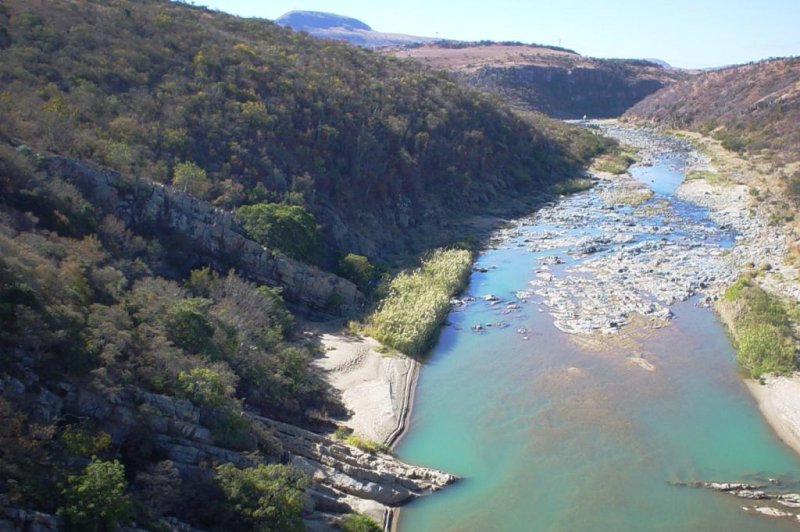Evidence of ancient oxygen was discovered among rock layers in the Pongola Basin, South Africa. Photo by Axel Hofmann/University of Johannesburg
Jan. 18 (UPI) -- Researchers have discovered the oldest evidence of a dramatic uptick in oxygen on early Earth -- the oldest oxygen oasis yet unearthed.
The new research, published this week in the journal Nature Communications, suggests photosynthesizing bacteria began churning out significant amounts of oxygen as early as 2.97 billion years ago.
Scientists have previously found evidence of oxygen-producing bacteria among rock layers dated to 2.5 billion years ago. Such rocks have been discovered on several continents. The newest discovery pushes the emergency of photosynthesizing bacteria back by some 500 million years.
The evidence was found among ancient rock layers in South Africa's Pongola Basin. Scientists believe the basin hosted the planet's first oxygen-breathing organisms.
Much of the early oxygen produced as a byproduct of photosynthesis quickly combined with other molecules. Only a small percentage ended up in the atmosphere.
"We can see that in the disappearance of reduced minerals in the sediments on the continents," Benjamin Eickmann, a researcher at the University of Tübingen in Germany, said in a news release. "Certain sulfur signatures which can only be formed in a low-oxygen atmosphere are no longer to be found."
For bacteria that evolved under extreme low-oxygen condition, the rise in oxygen was a death sentence. But even after the earliest uptick in oxygen levels, the atmospheric concentration remained low.
"After the first big rise, the atmosphere only contained 0.2 percent oxygen -- today it's around 21 percent," Eickmann said.
Scientists were able to deduce the presence of oxygen by analyzing sulfate isotopes. Sulfate was a primary energy source for early bacteria.
"Sulfate is a form of oxidized sulfur," researcher Ronny Schönberg said. "A higher concentration of sulfate in the water indicates that sufficient free oxygen must have been present in the shallow sea of the Pongola Basin."
Even as bacteria consumes sulfate, its levels began to rise as early as 2.97 billion years ago as oxygen was introduced
"That makes the Pongola Basin the oldest oxygen oasis known to date," Schönberg said. "The oxygen was building up in the water long before the Great Oxygenation Event."















